
views
Determining What Will Sell

Scout the swap meet. Before deciding if you want to become a seller and what you want to sell, take a few laps around the swap meet on different days. Find out what seems to sell well and what does not. A common target profit margin for small items at swap meets is 30-35% (if you are buying things to sell). So if you are looking to make real money and not just have some fun and/or clear out your attic, you need to put some thought into what you want to focus on selling. All swap meets are unique, catering to different audiences and emphasizing different best-sellers. The only way to know is to go. What purchases are shoppers carrying around? What seems to disappear from tables between opening and closing, and what doesn’t? Don’t just look around, talk to people. Most swap meet sellers will be happy to share their advice, seeing you as a compatriot and not a competitor.
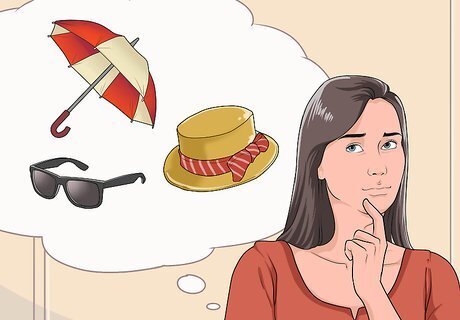
Look for impulse buys. Many swap meet shoppers come in with an idea of what they want, but often walk out with things they had no intention of buying. Stocking inexpensive “impulse buys” that will move quickly can net a tidy profit and drive traffic to your other merchandise. Consider sunglasses, umbrellas, and/or hats and gloves (depending on weather conditions); t-shirts, especially with retro, sports, humorous, or local themes; kitschy knick-knacks; small, simple toys; kitchen gadgets; and other items that take up little space (on your table and in their bag) and cost less than $20 or so. Another method of luring customers is utilizing “loss leaders,” or items that don’t net you much (or any) profit but draw eyeballs to your merchandise. Displaying a flat-screen TV for sale may not net you much on its own, but could be worthwhile in drumming up sales of your other items.
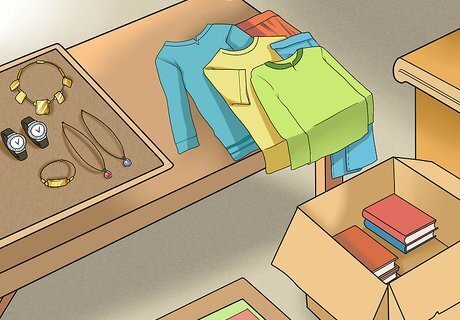
Try traditional strong-sellers. At almost every swap meet, items like clothing, jewelry, and books move well — when priced and displayed right, at least. Again, see what sells best at your chosen swap meet, and consider what you can acquire cheaply (or for free) to sell. Used paperbacks can often be bought in bulk for pennies apiece and then sold individually for 50 cents or so. You won’t retire to a private island this way, but you can make a nice little chunk of change each week. Remember that size matters at swap meets. Space in your car and on your table will be tight, so smaller items that move quickly are usually your best bet. People are more apt to buy things they can simply toss into an existing bag or carry out in one hand.

Use items to sell items. Think of this as pairing or staging items. Selling complementary merchandise, or using one piece to draw interest in another, can boost your sales. For instance, if you have shelves to sell, place knick-knacks on them. If you have dishes, display other items on top of them. Don’t conceal your target item with clutter, but make it and the other items more noticeable than each would be alone. You always want as many items as possible to catch your potential customer’s eye. Another method of using items to sell items is to offer bulk discounts of the same item. For example, if you have your hands on a large supply of socks, a “buy two pair, get one free” sale can prove irresistible to someone who really only wanted one pair.
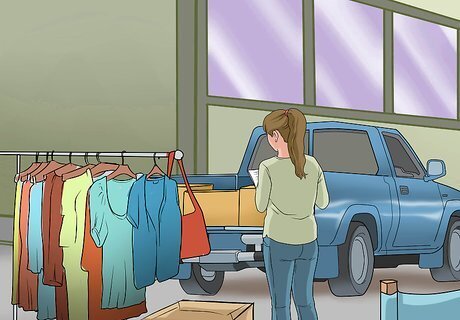
Make no assumptions. However thorough your research and planning, what will sell on a given swap meet day depends upon who shows up and what they decide to buy (beforehand or on a whim). So long as you can find the room in your vehicle, always bring more merchandise than you think you can sell. (This is one reason why compact items are usually a better bet.) An empty table does you no good. Again, if space allows, take a chance on selling some things that you can’t foresee someone buying. Every swap meet shopper has his own unique tastes and interests. You never know if today is the day when you can unload that box full of disco 8-tracks you found in your uncle’s attic.
Acquiring Merchandise Cheaply

Gather the objects you have been saving for an eventual garage sale. Rent space at your local swap meet or flea market. If you’re lucky, you will be sold out by the end of the weekend and the stuff taking up space in your house will translate to cash in your pocket. Offering a smorgasbord of stuff from your attic can also give you a good idea or what sells and what does not at your particular swap meet. Almost everyone has used books lying around or boxed up, and remember that these are often among the most popular sellers at swap meets. The same goes for seasonal clothing in good condition.
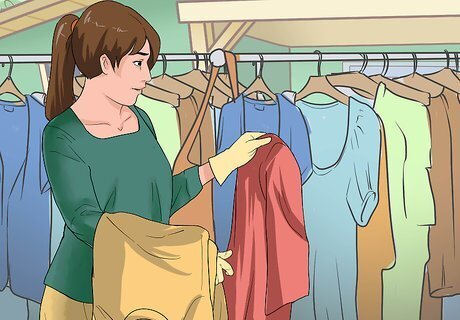
Shop around at garage sales in your community. You will find clothing, hand tools, toys, books, furniture, and knick knacks. These can all sell at swap meets. Be mindful of your swap meet research, though. You don't want to pay too much for the items or pay for something that will never sell. One of the best things you can do is browse your swap meet and jot down the prevailing prices for common items. Then go to local garage sales and snatch up sellable items that are priced at well below swap meet value. Most people having a garage sale just want to get rid of the stuff, so make a low offer on a large supply of items you know you can sell at the swap meet. (This is another great way to acquire used books.) Go near the end of the posted time for the sale for the best deals (but also the most limited selection).
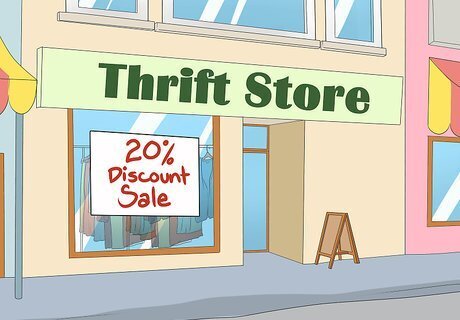
Look over items in thrift stores. Thrift stores often have sale days when everything is half price. That translates into a profit for you when you resell the items at the swap meet. The secrets to finding these bargains are frequent visits, learning their inventory, and knowing when they have sales. This information will help you schedule your time, know when to purchase, and decide how to keep the price right. Thrift stores are often the best place to acquire used clothing in decent condition. When you see a real bargain, strike quickly and buy in bulk. These items can form a cornerstone of your swap meet inventory.
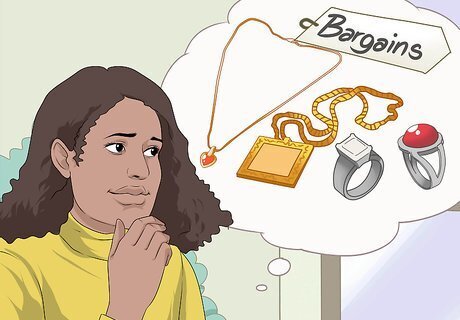
Take part in auctions. There are many types of auctions available to you and all of them offer items for resale. You can snag great bargains that can be turned into nice profits at the swap meet. Jewelry, which often sells well at swap meets, is a common item found at auctions. The trick is to know what you’re buying and to never overpay. Auction houses take goods on consignment and sell to the highest bidders. They frequently advertise in the newspaper and have websites where they announce upcoming auctions and list goods that are ready for auction. At police auctions, items seized from criminals are put up for bid and can often be had for pennies on the dollar. Check local news sources for information on police auctions in your area. These can be another place to acquire jewelry, among other things. Storage warehouse auctions, as made popular by reality TV shows, are another option to find items to resell You are allowed only to look into the unit and not go through items. You will never know if there is any real value in the unit unless you buy the lot, so this can be a risky venture. Estate auctions are mostly held at the homes of people who have recently died, been moved to an assisted-living facility, or are just downsizing. Think of this auction as a garage sale on steroids, with the price driven by other buyers and the chant of the auctioneer. There are also just regular estate sales, without the auction element. Online auction sites can also be a good choice for acquiring bulk merchandise to sell at the swap meet. The inventory selection is endless, and if you know what to look for and how much to pay, you can do quite well for yourself.
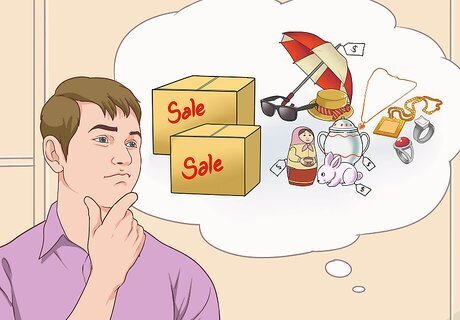
Decide to sell new merchandise as well as used items. Not everything for sale at a swap meet is old or used. Maybe you want to offer new tools, clothing or sunglasses for sale at your booth. You will need to find a wholesaler from which to buy these items. There are suppliers who sell bulk goods at a significantly lower price to flea marketers. Research wholesalers in your area, and ask other vendors at the swap meet. Pay special attention to the profit margin you seek and the price you can expect to sell your items for. If you can’t get a great wholesale price, don’t buy. Unless you are offering handcrafted items for sale, remember that volume and value are the keys to making money at swap meets, whether the items are new or used.

















Comments
0 comment